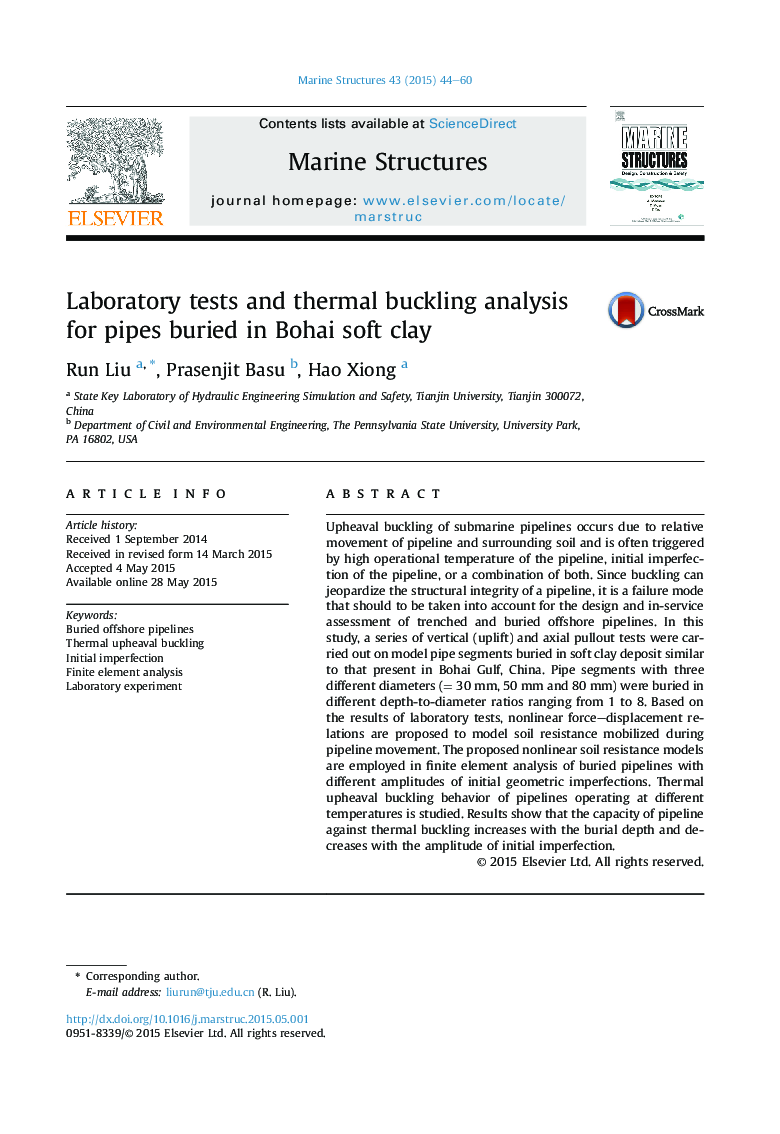| Article ID | Journal | Published Year | Pages | File Type |
|---|---|---|---|---|
| 294222 | Marine Structures | 2015 | 17 Pages |
•24 vertical uplift tests and 21 axial pullout tests were carried out on model pipe segments buried in soft clay.•Nonlinear soil spring models are established to model soil resistance mobilized during pipeline movement.•The proposed nonlinear soil spring models are employed in thermal buckling analyses of initially imperfect pipelines buried in the Bohai Gulf.
Upheaval buckling of submarine pipelines occurs due to relative movement of pipeline and surrounding soil and is often triggered by high operational temperature of the pipeline, initial imperfection of the pipeline, or a combination of both. Since buckling can jeopardize the structural integrity of a pipeline, it is a failure mode that should to be taken into account for the design and in-service assessment of trenched and buried offshore pipelines. In this study, a series of vertical (uplift) and axial pullout tests were carried out on model pipe segments buried in soft clay deposit similar to that present in Bohai Gulf, China. Pipe segments with three different diameters (= 30 mm, 50 mm and 80 mm) were buried in different depth-to-diameter ratios ranging from 1 to 8. Based on the results of laboratory tests, nonlinear force–displacement relations are proposed to model soil resistance mobilized during pipeline movement. The proposed nonlinear soil resistance models are employed in finite element analysis of buried pipelines with different amplitudes of initial geometric imperfections. Thermal upheaval buckling behavior of pipelines operating at different temperatures is studied. Results show that the capacity of pipeline against thermal buckling increases with the burial depth and decreases with the amplitude of initial imperfection.
